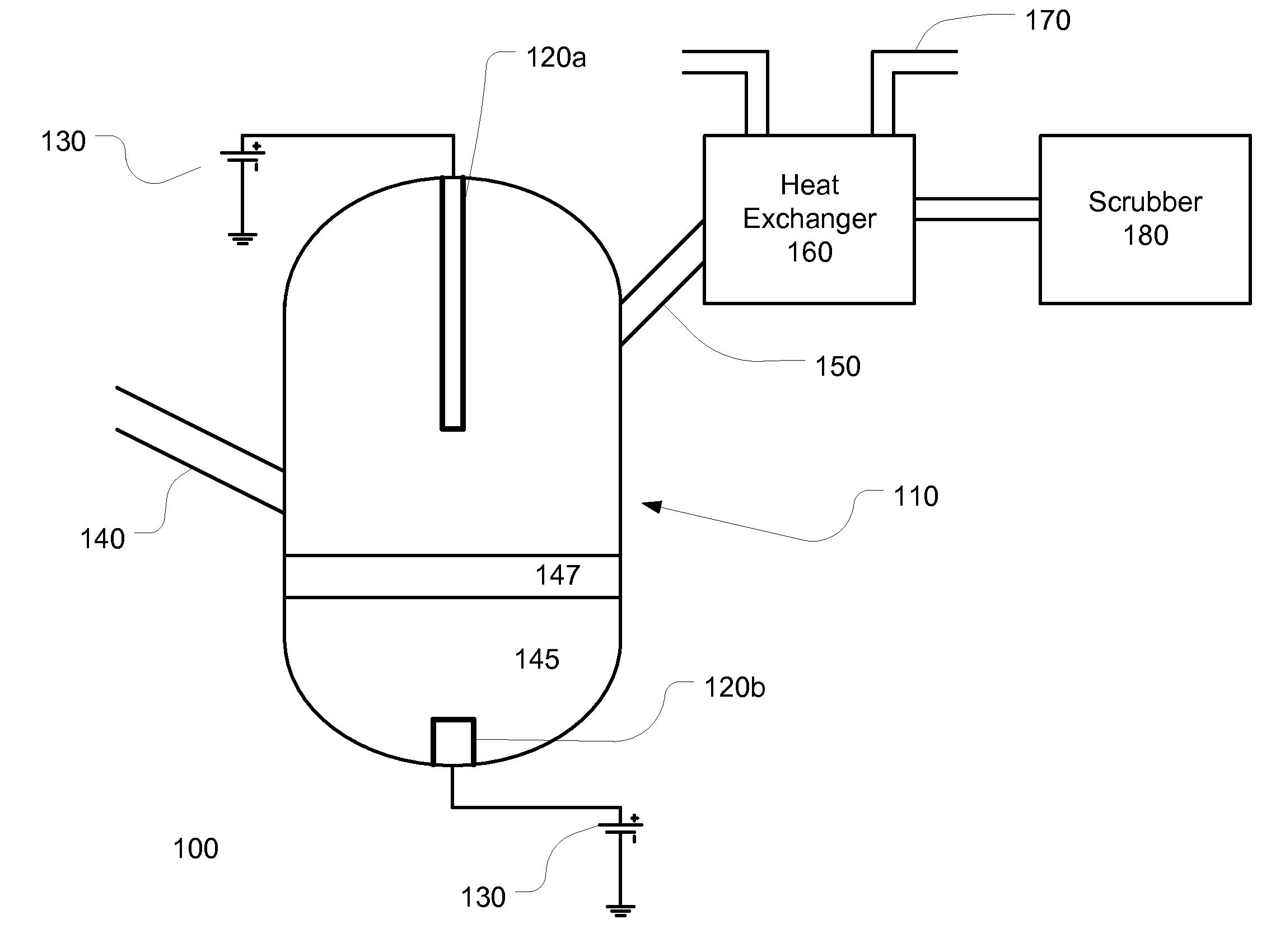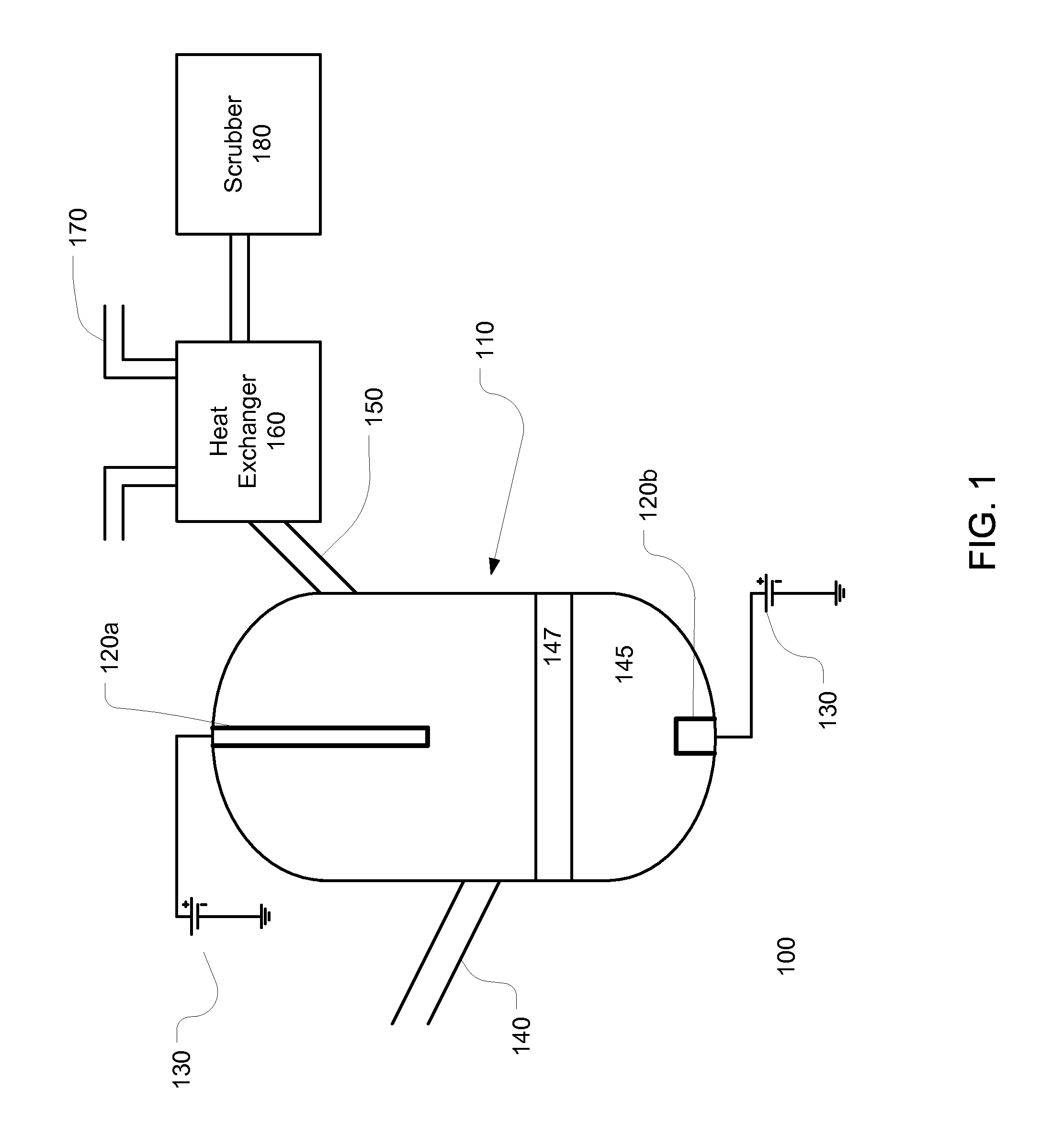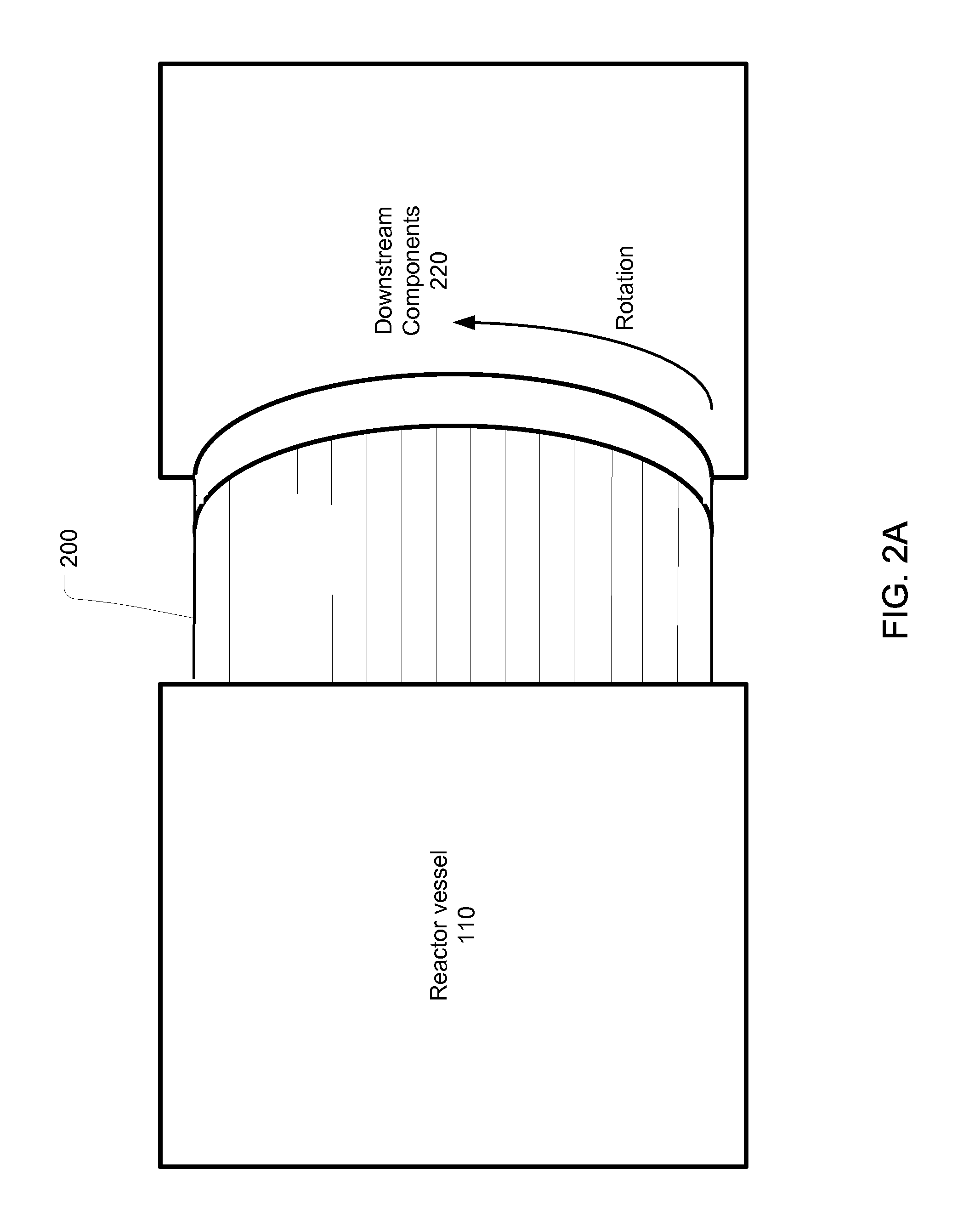Regenerator for syngas cleanup and energy recovery in gasifier systems
a gasifier and energy recovery technology, applied in the direction of molten salt/metal gasification, combustion types, sustainable manufacturing/processing, etc., can solve the problems of increasing environmental problems, increasing the number of waste generation, and increasing the difficulty of gasification, so as to reduce the amount of syngas and reduce the heating requirement
- Summary
- Abstract
- Description
- Claims
- Application Information
AI Technical Summary
Benefits of technology
Problems solved by technology
Method used
Image
Examples
Embodiment Construction
[0024]FIG. 2A shows a schematic diagram of a rotating energy exchanger 200. The energy exchanger 200 may be located between the vessel 110 and other downstream components 220. FIG. 2B shows a representative cross sectional view of an energy exchanger 300. The heated stream passes through a portion 310 of the energy exchanger, while a cold stream is passed through a second portion 320. The line 315 between the two portions signifies a wall or other separator that keeps the two flows apart. The heated stream imparts its thermal energy to the first portion 310 of the energy exchanger 300. The energy exchanger 300 is rotated, such that the recently heated portion of the energy exchanger 300 is not used by the heated stream. Instead, the cold stream flows through the heated portion of the energy exchanger, where the energy flows from the thermal mass of the energy exchanger 300 to the cold stream. The net effect is that the heated portion 310 releases its stored heat to the cold stream. ...
PUM
| Property | Measurement | Unit |
|---|---|---|
| temperature | aaaaa | aaaaa |
| temperature | aaaaa | aaaaa |
| pressure | aaaaa | aaaaa |
Abstract
Description
Claims
Application Information
 Login to View More
Login to View More - R&D
- Intellectual Property
- Life Sciences
- Materials
- Tech Scout
- Unparalleled Data Quality
- Higher Quality Content
- 60% Fewer Hallucinations
Browse by: Latest US Patents, China's latest patents, Technical Efficacy Thesaurus, Application Domain, Technology Topic, Popular Technical Reports.
© 2025 PatSnap. All rights reserved.Legal|Privacy policy|Modern Slavery Act Transparency Statement|Sitemap|About US| Contact US: help@patsnap.com



